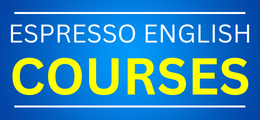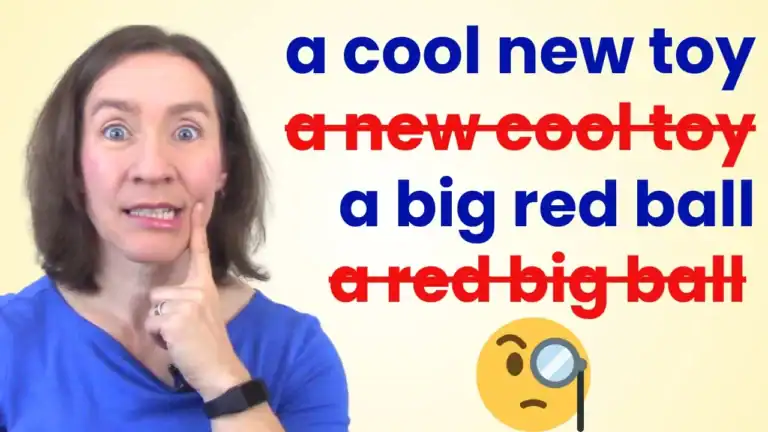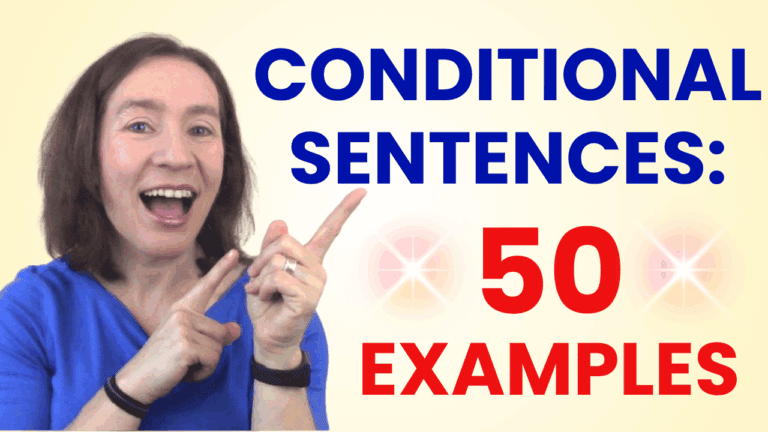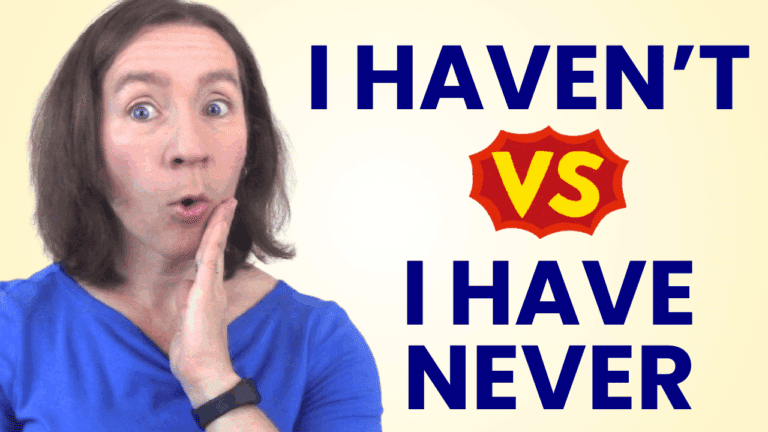
Did you know that we have two types of verbs in English? They are action verbs (or dynamic verbs) and state verbs (also called “stative verbs” or “state of being verbs”).
There are even some verbs that can be BOTH action verbs and stative verbs, depending on the use and context! We’ve also got some special grammar rules about state verbs, and today you’ll learn all about them.
I’ve made the lesson guide available for you to download for free – just click below and enter your e-mail address to receive that free PDF download.
Let’s start with action verbs:
What are Action Verbs?
Action verbs (or dynamic verbs) are verbs that describe actions. We can use them in the simple or continuous verb tenses.
Action verbs: Examples
walk
- Every day I walk home from class.
- I‘m walking to the store right now.
read
- I read mostly historical fiction.
- I‘ve been reading a novel that takes place during colonial times.
help
- My sister helps me with my homework.
- My father is helping me learn how to drive.
watch
- Bob watches four hours of TV every night.
- Last night, he got angry at me because I changed the channel while he was watching his favorite show.

What are Stative Verbs?
Stative verbs (or state verbs) describe a status or quality of something… NOT an action. Verbs of perception, opinion, the senses, emotion, possession, and state of being are often stative verbs.
Here are some examples:
Stative verbs of opinion / perception:
know, believe, understand, recognize, prefer, agree/disagree, approve/disapprove, suppose, suspect
- I’ve known my best friend since childhood.
- I‘ve been knowing my best friend since childhood.
- We agree with you.
- We‘re agreeing with you.
- He doesn’t understand the article.
- He‘s not understanding the article.
Stative verbs of possession:
have, own, belong, possess, include, owe
- I have a bicycle.
- I‘m having a bicycle.
- This book belongs to the teacher.
- This book is belonging to the teacher.
- Our tour included a visit to the Modern Art Museum.
- Our tour was including a visit to the Modern Art Museum.

Stative verbs of the senses:
hear, smell, see, feel, appear, seem, resemble
- I hear some music playing.
- I‘m hearing some music playing.
- This perfume smells like roses.
- This perfume is smelling like roses.
- He seemed upset last night.
- He was seeming upset last night.
Stative verbs for emotional states:
love, hate, like, want, need, desire, wish
- I love ice cream.
- I‘m loving ice cream.
- She has always hated jazz.
- She has always been hating jazz.
- They need some help.
- They‘re needing some help.
Stative verbs of states/qualities:
weigh, contain, consist, measure, cost, exist, depend, deserve, involve, matter
- This piece of meat weighs two pounds.
- This piece of meat is weighing two pounds.
- The box contained a pair of earrings.
- The box was containing a pair of earrings.
- Success depends on how much effort you make.
- Success is depending on how much effort you make.
- This class will involve lots of research.
- This class will be involving lots of research.

Note: We do not use state verbs in continuous tenses when they’re the main verb… but they CAN be continuous when used as gerunds, in prepositional phrases, or after certain verbs that require -ING:
Main verb:
- I have a bicycle.
Gerund:
- Having a bicycle saves me a lot of money.
Main verb:
- The box contained a pair of earrings.
Prepositional phrase:
- The box containing a pair of earrings was stolen.
Main verb:
- He felt unprepared for the presentation.
After verb requiring -ING:
- I enjoy feeling well-prepared for every presentation.
Verbs that can be both action verbs and stative verbs
Some verbs can function as BOTH action verbs and stative verbs!
Here are some examples:
be
- Stative verb:
He is immature. (he is always immature) - Action verb:
He is being immature. (he is temporarily acting immature)
have
- Stative verb: possession
I have a car. He has a dog. - Action verb: expressions with “have”
I’m having breakfast (eating breakfast).
He’s having fun (experiencing fun).
see
- Stative verb: perception with your eyes; understanding
I see some birds.
I see what you mean. - Action verb: meet; have a relationship with
I’ll be seeing the doctor tomorrow.
They’ve been seeing each other for a month.

look
- Stative verb: appearance
That cake looks delicious! - Action verb: directing your eyes to something; phrasal verbs
He’s looking at the computer screen.
She’s looking for (= seeking) a job.
They’re looking after (= taking care of) my dog for the weekend.
smell / taste
- Stative verb: the quality of smell or taste possessed by something
The bar smells of smoke.
This meat tastes like chicken. - Action verb: when a person uses their nose or mouth to test something
He’s smelling the cookies.
She’s tasting the soup to see if it needs more salt.
think / feel
- Stative verb: when talking about your opinion
I think that’s a great idea!
I feel that this is not the best use of our time. - Action verb: when using your mind, or experiencing emotions or health issues
We’re thinking about moving to another city.
I’ve been feeling unusually tired lately.

weigh / measure
- Stative verb: when talking about the quality possessed by something
The suitcase weighs 20 pounds.
The surfboard measures 2 meters by 55 centimeters. - Action verb: when a person performs the action of weighing/measuring something
The butcher is weighing the meat on the scale.
The architects were measuring the distance between the pillars.
Hope that helps you understand the difference between action verbs and stative verbs, as well as how we use them!
If you want to understand and really master English grammar so that you can use it successfully without thinking too much about all these rules, come join my Advanced English grammar course.
What’s great about this course is that not only will you learn grammar, but I’ll also help you put it into practice and use it yourself. It will help take your English language skills from “good” to GREAT!
Learn more: Linking verbs









